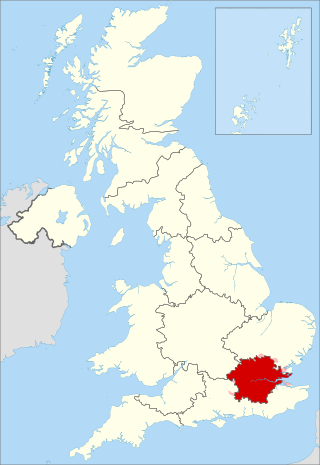
The Independent Television Authority (ITA) was an agency created by the Television Act 1954 to supervise the creation of "Independent Television" (ITV), the first commercial television network in the United Kingdom. The ITA existed from 1954 until 1972. It was responsible for determining the location, constructing, building, and operating the transmission stations used by the ITV network, as well as determining the franchise areas and awarding the franchises for each regional commercial broadcaster. The Authority began its operations on 4 August 1954, a mere four days after the Television Act received Royal Assent, under the Chairmanship of Sir Kenneth Clark. The Authority's first Director General, Sir Robert Fraser was appointed by Clark a month later on 14 September.

Wales Television, known on screen as Teledu Cymru and often abbreviated to WWN, was the Welsh "Independent Television" contractor awarded the franchise area serving North and West Wales, from 1962. It began transmitting on 14 September 1962, and ceased on 26 January 1964 through financial failure; the franchise area was soon combined with the South Wales and West of England area, operated by TWW. TWW retained the Teledu Cymru name in the former WWN franchise area, as did successor Harlech during their emergency transitional franchise, only retiring the name when they were able to officially take over.

ABC Weekend TV was the popular name of the British broadcaster ABC Television Limited, which provided the weekend service in the Midlands and Northern England regions of the Independent Television (ITV) network from 1956 to 1968. It was one of the "Big Four" companies that between them produced the majority of ITV networked programmes during this period.

ITV Granada, formerly known as Granada Television, is the ITV franchisee for the North West of England and Isle of Man. From 1956 to 1968 it broadcast to both the north west and Yorkshire on weekdays only, as ABC Weekend Television was its weekend counterpart. Granada's parent company Granada plc later bought several other regional ITV stations and, in 2004, merged with Carlton Communications to form ITV plc.

ITV Channel Television, previously Channel Television, is a British television station which has served as the ITV contractor for the Channel Islands since 1962. It is based in Jersey and broadcasts regional programme for insertion into the network ITV schedule. Until November 2011, Channel Television was one of four ITV companies independent from ITV plc alongside the two STV regions in Scotland and UTV in Northern Ireland. The station has been owned by ITV plc since 2012 and the licence was transferred to ITV Broadcasting Limited in March 2017.

Associated Television was the original name of the British broadcaster ATV, part of the Independent Television (ITV) network. It provided a service to London at weekends from 1955 to 1968, to the Midlands on weekdays from 1956 to 1968, and to the Midlands all week from 1968 to 1982. It was one of the "Big Four" until 1968, and the "Big Five" after 1968, that between them produced the majority of ITV networked programmes. In 1982, ATV was restructured and rebranded as Central Independent Television, under which name it continued to provide the service for the Midlands.

Thames Television, commonly simplified to just Thames, was a franchise holder for a region of the British ITV television network serving London and surrounding areas from 30 July 1968 until the night of 31 December 1992. Thames Television broadcast from 09:25 Monday morning to 17:15 Friday afternoon at which time it would hand over to London Weekend Television (LWT).

London Weekend Television (LWT) was the ITV network franchise holder for Greater London and the Home Counties at weekends, broadcasting from Fridays at 5.15 pm to Monday mornings at 6:00. From 1968 until 1992, when LWT's weekday counterpart was Thames Television, there was an on-screen handover to LWT on Friday nights. From 1993 to 2002, when LWT's weekday counterpart was Carlton Television, the transfer usually occurred invisibly during a commercial break, for Carlton and LWT shared studio and transmission facilities.

Southern Television was the ITV broadcasting licence holder for the South and South-East of England from 30 August 1958 to 31 December 1981. The company was launched as 'Southern Television Limited' and the title 'Southern Television' was consistently used on-air throughout its life. However, in 1966, during the application process for contracts running from 1968, the company renamed itself 'Southern Independent Television Limited', a title which was used until 1980 when the company reverted to its original corporate name. Southern Television ceased broadcasting on the morning of 1 January 1982 at 12:43am, after a review during the 1980 franchise round gave the contract to Television South.
The history of ITV, the United Kingdom and Crown Dependencies "Independent Television" commercial network, goes back to 1955.
Captain Thomas Marcus Brownrigg CBE DSO RN (Retired) was a British Royal Navy officer before and during World War II who later became the first General Manager of Bracknell New Town Development Corporation before becoming the first General Manager of Europe's first commercial television station, Associated-Rediffusion.
Howard Thomas CBE was a Welsh radio producer and television executive.

Television House is the former name of a building on Kingsway in London. From 1918, it was the base of the Air Ministry, and later from 1955, was the headquarters of Associated-Rediffusion/Rediffusion London, Independent Television News (ITN), TV Times magazine, the Independent Television Companies Association and, at first, Associated Television. Later, it was the initial base for Rediffusion's successor, Thames Television. After Thames moved out, it was the headquarters of the General Register Office for England and Wales and subsequently of ExxonMobil. It is now known as 61 Aldwych.
The ITV Emergency National Service was the management response to the near-complete Independent Television technicians' strike immediately after the 1968 franchise changes took effect.
In the 1960s and 1970s, an envisioned fourth UK television service was popularly referred to as ITV2, before the launch of Channel 4 in November 1982.
This is a timeline of the history of the British broadcaster London Weekend Television. It has provided the ITV weekend service for London since 1968.
This is a timeline of the history of the former British television broadcaster ATV. It provided the ITV service for London at weekends and the Midlands on weekdays from 1955 to 1968, and for the Midlands all week from 1968 to 1982.
This is a timeline of the history of the British broadcaster Thames Television and its predecessor Associated-Rediffusion. Between them, they provided the ITV weekday service for London from 1955 to 1992, after which Thames continued as an independent production company until 2003.
This is a timeline of television in London.
This is a timeline of the history of the British television company ABC Weekend TV, one of the first four contractors of the Independent Television network.













